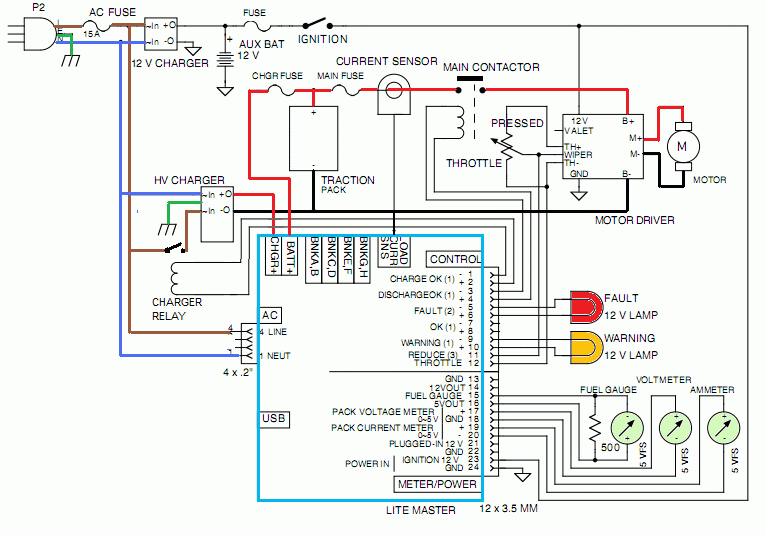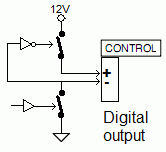|
Master installation
Connecting the master to the battery and to the rest of the EV
You MUST provide a way for the BMS to shut down the charger and all battery loads (including the motor driver), DIRECTLY!
Just because you have a BMS on board, don't think that your pack is protected. To protect the battery, the BMS must be powered whenever there is any current in or out of the pack. If there is any current in or out of the pack, yet the BMS is off, your pack IS NOT PROTECTED! A load that is permanently connected to the battery pack will damage your pack, even if it has a low voltage cutoff. That is because the lowest capacity cell can be overdischarged before the pack voltage is low enough to trip the low voltage cut-off. Therefore, the BMS MUST be able to shut down all the loads draining the battery; a load with a low-voltage cut-off may be of no help. Similarly, the BMS MUST be able to shut down all the charging sources (charger and regen); a source with a high-voltage cut-off may be of no help.
For a clean and reliable installation, we recommend that you use ferrules crimped on all control wires screw terminal blocks. User supplied parts:
Proper tools for the installation of this BMS include:
Other tools you're likely to need for the EV assembly include:
Here is a recommended schematic diagram for an EV using a Lithiumate Lite BMS. 
Typical EV schematic with a Lithiumate Lite BMS NOTE: pin-out of 4-wire AC connector is for rev C Master. For rev F Master use pins 3 and 4 instead.
You can connect a load to the digital outputs in these ways:
Do not do any of the following, as the BMS will not work (no damage to the BMS):
Do not do any of the following, as the BMS be damaged:

Do's and don'ts when wiring the digital outputs.
|

Lithiumate™ Lite Manual
User manual
User manual
